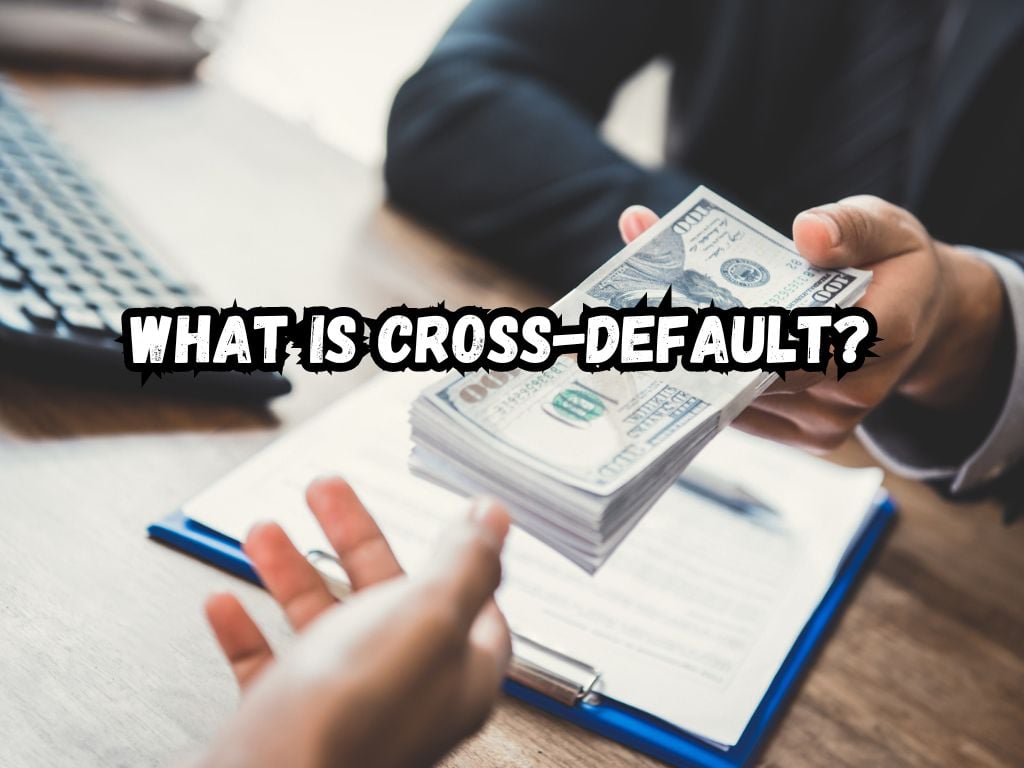In the intricate world of finance, cross-default is a term that carries significant weight.
It serves as a safeguard for lenders and a potential pitfall for borrowers. Understanding this concept is crucial for navigating the financial landscape.
The intent of this article is to dissect the intricacies of cross-default, offering clear insights into how it operates and the implications it bears.
What Is Cross default?
Cross-default is a provision often embedded within the terms of financial agreements and loan documents. This clause ensures that if a borrower defaults on one obligation, they are considered in default on another obligation, even if all payments on that second obligation are up to date.
This mechanism ties the financial health of multiple debts together, reflecting the interconnected nature of financial obligations.

How Cross-default Works
Imagine a borrower with several loans from different lenders. If they fail to meet the terms of one loan, a cross-default clause can cause all other loans to enter a state of default. This domino effect pushes the borrower to uphold all their financial commitments diligently.
Lenders use this as a lever to ensure they are not left at the end of the line, waiting for repayment while other creditors act.
The Implications of Cross-default Clauses
For borrowers, cross-default clauses amplify the perils of financial distress. One misstep can lead to a cascade of defaults, potentially resulting in financial collapse.
On the other hand, creditors may find solace in these clauses. They provide a form of protection, ensuring that they can claim their dues in a timely manner or take appropriate action if a borrower defaults elsewhere.
Key Components of Cross-default Clauses
Within cross-default clauses, the threshold amount is a critical figure. It defines the minimum amount of unpaid debt that can trigger cross-default. This element prevents minor infractions from setting off disproportionate consequences.
Additionally, a cure period allows borrowers a specified timeframe to remedy the default before further action is taken.
Distinguishing between cross-acceleration and cross-default is also vital. Cross-acceleration allows for a default under one obligation to accelerate the maturity of another.
In contrast, cross-default places the second obligation in an immediate state of default, exacerbating the borrower’s woes.
Cross-default in International Finance
In the broader realm of international finance, cross-default clauses can affect multinational loans and investments. Different countries may govern these cases differently, requiring adept navigation of international legal landscapes.
Firms engaging in cross-border transactions must be acutely aware of these clauses and their potential impact on global operations.
Managing Cross-default Risks
Borrowers should adopt proactive strategies to manage the risks associated with cross-default clauses. These include thoroughly negotiating the terms of these clauses and keeping creditors informed to foster trust and prevent unexpected triggers of cross-default.
Diversifying borrowing sources also dilutes the inherent risks, as reliance on a singular lender is reduced.
Legal Considerations
The legal environment surrounding cross-default is complex. A default may provoke a series of contracts to become void, and litigation may ensue.
It is crucial to have a legal advisor on board to dissect the terms of any cross-default clauses and prepare for any potential legal disputes that might follow a default scenario.
Pros and Cons of Cross-default Clauses
Cross-default clauses do intend to uphold sound financial discipline. For creditors, they serve as a critical risk management tool.
Yet, for borrowers, these clauses can be a sword hanging over their heads, capable of striking at the slightest financial struggle.
Therefore, the positioning regarding these clauses can vary greatly depending on one’s role in a financial transaction.

Pro Tips
Borrowers should make every effort to understand the potential consequences of cross-default clauses. Seeking guidance from financial advisors or legal counsel can help navigate these waters safely.
It is in the best interest of all parties to handle these clauses with the utmost care and attention.
Frequently Asked Questions
What triggers a cross-default clause?
The non-payment of a required debt that meets or exceeds the specified threshold amount can trigger a cross-default clause.
Can a cross-default clause be negotiated out of a loan agreement?
While it’s possible to negotiate the terms of a cross-default clause, completely removing it may be challenging as it serves to protect the lender’s interests.
How does cross-default affect a company’s credit rating?
A cross-default can significantly impact a company’s credit rating, signaling increased risk to potential lenders and investors.
Are there any industries more susceptible to cross-default risks?
Industries heavily reliant on financing and with intertwined financial obligations, such as real estate and construction, may be more prone to cross-default risks.
How can companies prepare for potential cross-default scenarios?
Maintaining strong communication with lenders, managing debt responsibly, and setting aside contingencies for financial downturns can help companies prepare for potential cross-default situations.
Conclusion
Cross-default clauses serve as key components in financial agreements designed to protect creditor interests.
It is an essential term that undersigns the gravity of adhering to financial obligations.
As we have unpacked the essentials of cross-default, the underlying message is one of caution and diligence. It is a reminder that in finance, as is often the case in life, everything is connected.


 Tags:
Tags:










